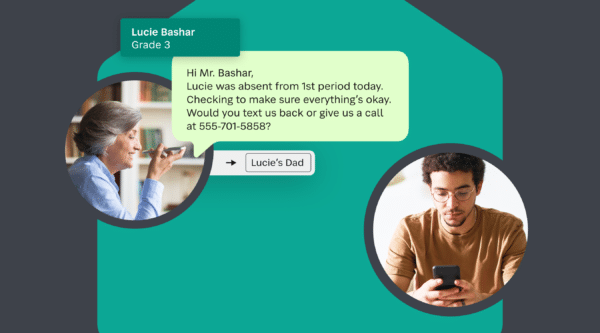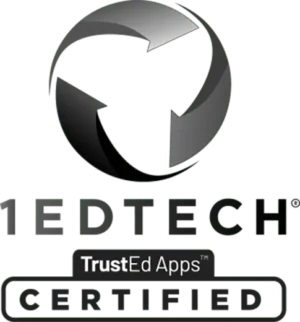

TL;DR:
Want to know how to increase family engagement in schools? Start by streamlining communication, supporting one-on-one outreach, offering inclusive messaging, and ensuring your leadership sets the tone. This post summarizes five proven strategies for superintendents based on the SchoolStatus guide, 10 Ways to Improve Family Engagement at the District Level.
When families feel connected to their child’s school, everything changes. Attendance improves. Students feel more supported. And trust between home and school becomes a shared priority.
But if you’re like most superintendents, you’re looking for smarter, more cohesive ways to engage families across your entire district.
It’s possible to create a communication system that’s both strategic and sustainable. Start with the guidance inside the free eBook: 10 Ways to Improve Family Engagement at the District Level.
This post unpacks five strategies from that guide. They’re all based on real research and actual practices that school districts are using to strengthen partnerships between schools and families.
Why Engagement Begins With Clear Communication
The eBook lays out the case plainly. When families are regularly informed, districts see measurable improvements in key outcomes:
- More positive learning environments
- Higher student attendance
- Improved social and emotional functioning
- Fewer disciplinary issues and dropouts
- Increased college enrollment rates
Is your district feeling pressure from chronic absenteeism, low engagement, or inequitable access? The common thread might be poor communication.
Set the Tone: Your Leadership Drives the Culture
As superintendent, your influence goes far beyond the central office. You define how families experience communication across your district. That includes the frequency and tone of your district-wide updates, the expectations you set for school and classroom outreach, the technology your educators use, and how you measure engagement and make improvements.
“Well-timed, constructive, and regular communications from a superintendent can set a tone that leaves families feeling good about the culture of the school their child attends.”
— 10 Ways to Improve Family Engagement at the District Level

5 Strategies to Help You Increase Family Engagement in Schools
These takeaways from the eBook are backed by real results and designed to be implemented at scale.
1. Streamline Tools to Reduce Frustration
When families receive messages from five different platforms, they don’t feel engaged—they feel overwhelmed. The guide recommends adopting a centralized communication system that consolidates texts, emails, calls, and announcements in one place. This type of system also helps your staff stay aligned and frees up valuable time.
Explore our guide to choosing a K-12 communication solution.
2. Use Data to Drive Outreach
Visibility is everything. Teachers and principals need quick access to student information—such as attendance, behavior, and academic progress—so they can intervene early and personalize their communication.
The eBook recommends equipping your team with tools that unify student data and communication logs into one view. This strategy helps build trust and create proactive, timely outreach.
3. Ensure Every Message is Inclusive
A key takeaway from the guide: if communication isn’t accessible, it isn’t engagement. Your district should prioritize multilingual translation and messaging that accounts for diverse family structures.
“Administrators should be mindful of unconventional family dynamics . . . For example, some students may be cared for by a single parent, grandparents, same-sex couples, or foster parents.”
— 10 Ways to Improve Family Engagement at the District Level
Read more: What Tools Help K-12 Teachers Communicate Effectively?
4. Champion 1:1 Outreach at Every Level
Mass updates are necessary, but personal outreach is transformational. The eBook highlights the effectiveness of direct messages (such as texts, calls, or emails) in reducing absenteeism and nurturing strong family-school relationships.
This kind of connection is especially critical for students who are disengaged or at risk. Make sure your educators have the tools to support it consistently.
5. Model Consistency From the Top
Leadership visibility matters. Whether you’re sending a welcome note at the start of the year or a mid-year check-in, the tone you set influences how schools communicate with families.
You don’t have to write every message personally, but ensuring consistency, clarity, and positivity across your district’s outreach channels starts with you.
The Results Are Within Reach
If you’re committed to building a culture of engagement and trust in your district, the strategies in the eBook provide a concrete starting point.
You’ll find guidance on:
- Reducing communication silos
- Improving family responsiveness
- Supporting educators with better tools
- Making district-wide outreach more equitable and efficient
Download your copy of 10 Ways to Improve Family Engagement at the District Level.
Ready to Take the Next Step?
If you’re looking for a communication solution that supports everything you’ve just read—one that makes it easy to reach every family, track engagement, and give your educators the tools they need—SchoolStatus Connect is built for district leaders like you.
With the right solution, you’ll create consistency, reduce staff burden, and build the trust that keeps students in the classroom and families engaged.
- Centralized communication across all schools
- Automatic translation in 130+ languages
- Personalized, two-way outreach at scale
- Data to help you spot and solve engagement gaps
Want to see how it works?
Schedule a personalized demo of SchoolStatus Connect and discover how the right system can help you increase family engagement, district-wide.
FAQs: How to Increase Family Engagement in Schools
Family engagement is directly linked to student success. According to the SchoolStatus eBook, benefits include improved attendance, better social-emotional outcomes, reduced behavioral issues, and higher college enrollment rates.
Superintendents set expectations, approve communication solutions, and model district-wide outreach. Your tone and timing influence the trust families place in schools.
A centralized communication solution that supports translation, multiple channels (text, email, phone), and user choice increases accessibility and consistency.
Focus on personalized outreach, proactive updates, inclusive language, and tools that unify district communication workflows.
Direct messages about attendance, academic progress, or student support—sent via text or phone call—show families that educators are paying attention and care.
Stay Connected
News, articles, and tips for meeting your district’s goals—delivered to your inbox.













